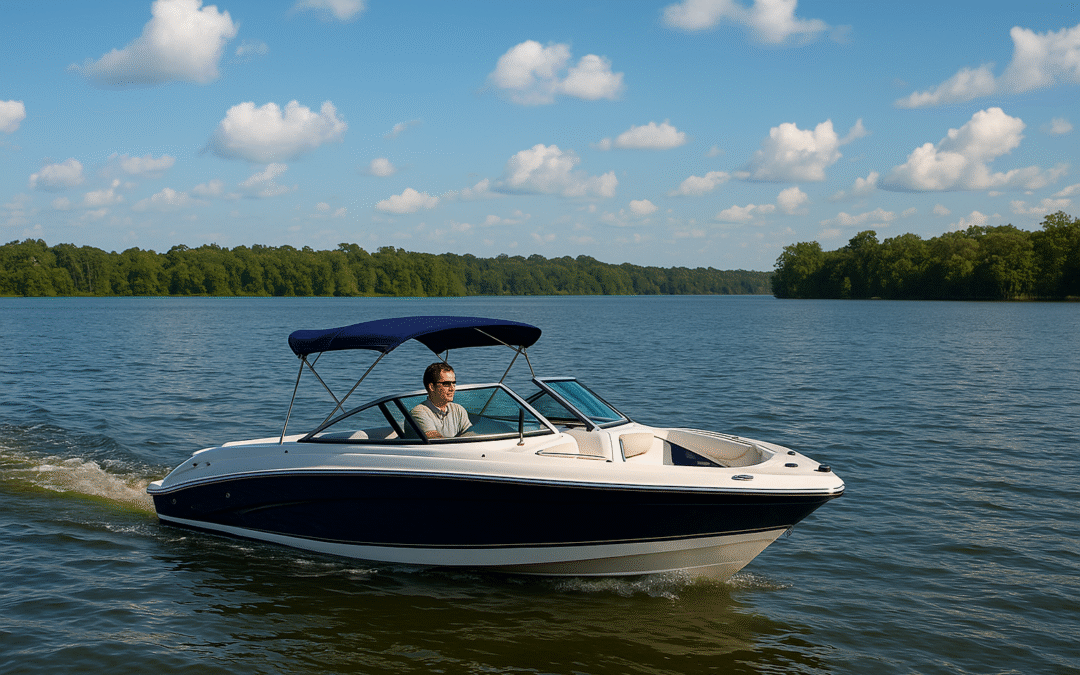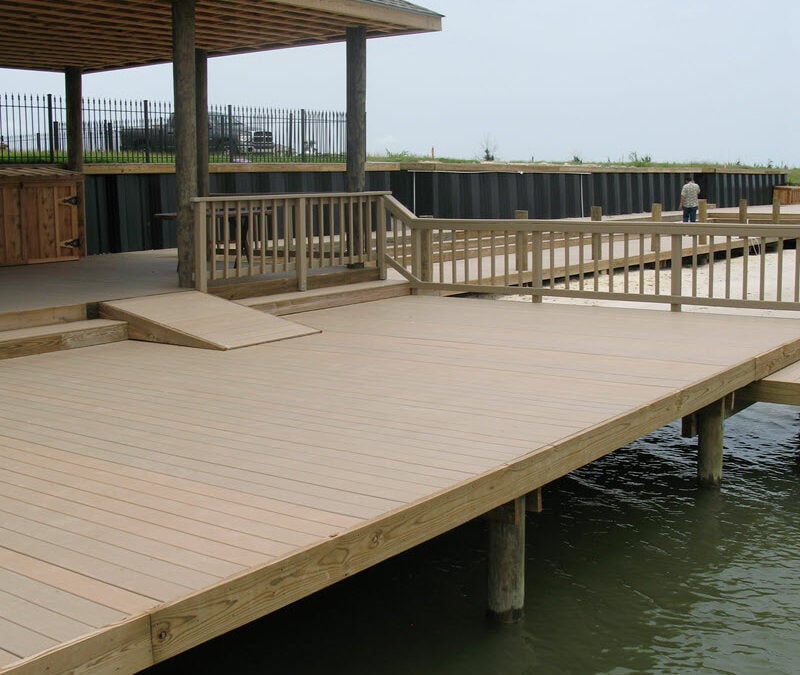Owning a boat in Louisiana means enjoying access to some of the best waters in the South—from Lake Pontchartrain and the Tchefuncte River to the Gulf Coast. But with that access comes responsibility, especially when it comes to protecting your investment. A boat lift is one of the most effective ways to extend the life of your vessel—but only if you maintain it properly.
At Lamulle Construction, we’ve built and maintained marine structures across Southeast Louisiana for decades. In this guide, we’ll share expert tips on how to maintain your boat lift year-round, avoid costly repairs, and keep your lift working smoothly through every season.
Why Boat Lift Maintenance Matters
Your boat lift isn’t just a convenience—it’s a protective system. When used and maintained correctly, it:
- Prevents hull damage from prolonged water exposure
- Reduces marine growth and corrosion on critical parts
- Keeps your vessel safer during storms and tides
- Protects your dock and surrounding structures
- Extends the life of both your boat and your lift
Neglecting your lift can lead to premature failure, expensive repairs, or worse—damage to your boat. That’s why regular maintenance isn’t just recommended; it’s essential.

Seasonal Boat Lift Maintenance Checklist
Spring: Prep for Boating Season
Spring is the ideal time to inspect and prepare your lift before boating activity picks up. Here’s what to focus on:
1. Inspect Cables and Pulleys
Look for fraying, rust, or signs of wear on the lift cables. These components bear the brunt of your boat’s weight and need to be in top condition. Replace any cable that shows even minor damage.
Tip: Cables should be replaced every 2–3 years, depending on usage and exposure.
2. Lubricate Moving Parts
Use a marine-grade lubricant on pulleys, drive units, and other moving parts. Avoid greasing the cables themselves unless the manufacturer specifically recommends it.
3. Check Motors and Electrical Systems
Make sure your lift motor starts up smoothly. Listen for unusual noises and inspect for signs of corrosion on electrical connections. If you use a remote or wireless control, test its range and replace batteries as needed.
4. Test the Limit Switch
The limit switch keeps your boat from over-lifting or slamming down. Manually run the lift through a full cycle to confirm the limit switch is functioning properly.
5. Wash and Clean the Lift
Remove debris, barnacles, algae, or dirt buildup from beams and bunks. A power washer can be helpful, but don’t use too much pressure on electrical components or worn surfaces.
Summer: Monitor and Adjust
Louisiana summers bring frequent boating—and plenty of humidity, heat, and storms. During peak season, maintenance becomes more about monitoring and quick tune-ups.
1. Rinse with Fresh Water
If you’re lifting a boat from brackish or saltwater, rinse cables and hardware with fresh water after use to minimize corrosion.
2. Monitor Cable Tension
Heavy use can cause cables to stretch. Uneven lifting is a red flag—if one side rises faster than the other, adjust the cable tension or call a professional.
3. Look for Sway or Misalignment
Check that the boat rests evenly on the bunks and that the lift rises straight. Any leaning or swaying could damage your hull and should be addressed immediately.
4. Inspect for Storm Damage
After a major rainstorm, hurricane, or strong wind event, inspect the lift for debris, bent arms, or structural strain. This is especially important if the lift was in use during the weather event.
Pro tip: Consider installing a storm safety kit to secure your boat and lift during unexpected surges.

Fall: End-of-Season Inspection
As boating season winds down, fall is the perfect time to prep your boat lift for cooler weather and fewer launches.
1. Clean and Flush Again
Give your lift a final wash to remove algae, silt, and any lingering marine growth.
2. Perform a Full Visual Inspection
Now’s the time to carefully look over:
- Drive belts
- Gearboxes
- Pulleys
- Electrical housing
- Bolts and welds
If anything looks loose or worn, address it before winter sets in.
3. Protect Electrical Components
Seal open connectors with dielectric grease and consider a protective housing for motors or control boxes.
4. Schedule Professional Service
If your lift is due for maintenance or hasn’t been serviced in a few years, fall is a great time to bring in a marine construction expert like Lamulle Construction. We can inspect, adjust, and even upgrade your lift before the off-season.
Winter: Off-Season Preparation
Louisiana winters are milder than most, but that doesn’t mean you can ignore your lift. Here’s how to protect it when it’s not in regular use.
1. Remove the Boat or Store in Raised Position
Either remove your boat entirely or lift it well above the waterline to prevent damage from tides, waves, or floating debris.
2. Disconnect Power if Not in Use
If you won’t be using the lift for several months, disconnect the power source or unplug the control system to prevent shorts or corrosion.
3. Cover and Protect
Consider using a lift motor cover to protect from moisture and debris. For long-term storage, you can also use a tarp or enclosure over the entire lift.
4. Check Occasionally
Even if your lift is dormant, check on it monthly. Make sure nothing has shifted, fallen, or corroded. Look for wildlife nests or ice buildup during cold snaps.
Common Boat Lift Problems—and How to Prevent Them
Regular maintenance helps prevent these common issues:
Frayed or Snapped Cables
Cause: Overloading, corrosion, or poor alignment
Prevention: Inspect and replace cables regularly, rinse after saltwater exposure, and avoid overloading the lift.
Motor Won’t Start
Cause: Corroded wiring, blown fuse, or faulty remote
Prevention: Protect electrical components, test seasonally, and replace batteries or fuses when needed.
Noisy Operation
Cause: Dry pulleys, misaligned cables, or worn parts
Prevention: Lubricate moving parts and tighten loose bolts or fittings.
Uneven Lifting
Cause: Stretched cables or worn pulleys
Prevention: Adjust cable tension and inspect pulley wheels for wear or damage.
Extra Tips for Louisiana Boat Owners
Because of our unique coastal environment, there are a few local considerations to keep in mind:
Salt and Brackish Water Effects
If your boat lift is in a saltwater area like Slidell, Mandeville, or Grand Isle, you’ll need to be more aggressive with anti-corrosion treatments. Freshwater rinses, stainless steel hardware, and coated cables are a must.
Hurricane Season Preparation
From June to November, storm prep is critical. Before a storm:
- Remove the boat if possible
- Raise the cradle and secure it with straps
- Disconnect power
- Remove or secure all accessories (canopies, remotes, etc.)
Need help prepping your lift for hurricane season? Contact Lamulle Construction for a consultation or emergency prep services.
When to Call the Pros
While most boat lift maintenance tasks are DIY-friendly, there are times when it’s best to call a professional marine contractor:
- Your lift makes grinding or popping noises
- One side lifts higher than the other
- Electrical components show signs of corrosion
- Your cradle or bunks are misaligned
- You want to upgrade or replace your lift
At Lamulle Construction, we offer inspection, repair, and replacement services for boat lifts across Southeast Louisiana. Whether it’s a simple fix or a full overhaul, we’ll make sure your lift is safe, reliable, and ready for action.
Extend the Life of Your Lift—and Your Boat
Maintaining your boat lift is one of the smartest investments you can make as a Louisiana boat owner. With a little attention each season, you can:
- Avoid surprise breakdowns
- Keep your boat protected
- Ensure a smooth launch every time
Whether you live on the Northshore, in New Orleans, or along the Gulf, Lamulle Construction is here to help you protect your marine lifestyle.
Need Help Upgrading Your Boat Lift?
Call Lamulle Construction today or fill out our contact form for expert boat lift service, maintenance, or upgrades. We’ll help you get more life out of your lift—year after year.






